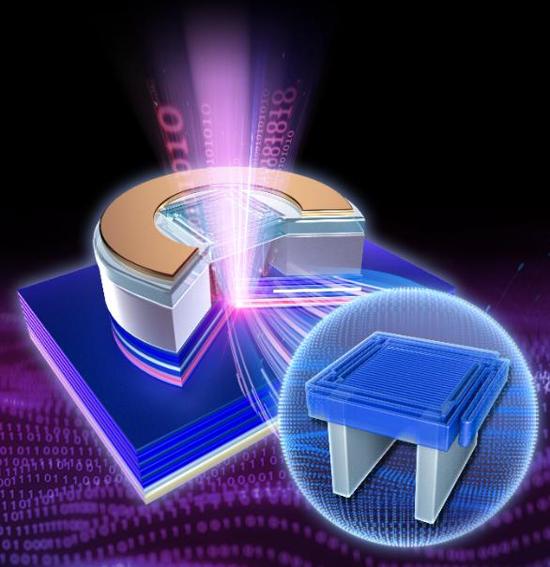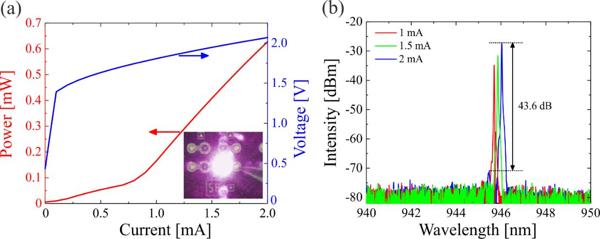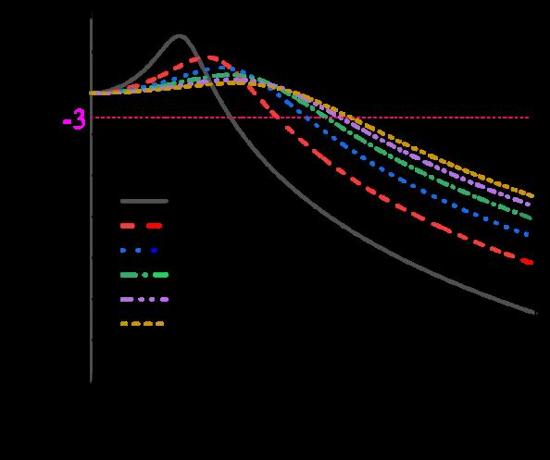Vertical-cavity surface-emitting lasers (VCSELs) have many unique features like circular beam, low power consumption, high modulation speed, and easy fabrication of two-dimensional arrays. Now VCSELs have been widely used in optical interconnects, consumer electronics, 3D sensing, and automotive applications.
The vertical cavity of a common VCSEL is always composed of two distributed Bragg reflectors (DBRs). 20 to 40 pairs of DBR layers with several micrometer thicknesses are needed to obtain a high reflectivity of larger than 99.5%, resulting in a great challenge for material growth.
The high-contrast grating (HCG) has a typical thickness of a few hundred nanometers, and shows a broadband and high reflectivity. The HCG has been used to partly or fully replace a DBR to form an HCG-VCSEL. The HCG-VCSEL shows excellent performance like single-mode operation, single polarized output, high-speed wavelength tuning, and beam shaping.
In HCG-VCSELs, most of the HCGs are air suspended, leading to a high index contrast and also wavelength tuning. The fabrication of air suspended HCGs is challenging. A carefully chosen sacrificial layer below the HCG layer is required. Furthermore, the critical point drying is indispensable to avoid buckling of the grating after the removal of the sacrificial layer, and thus the process is complicated.
In order to solve the problems, Prof. Anjin Liu and Prof. Wanhua Zheng team from Institute of Semiconductors, Chinese Academy of Sciences, together with Prof. Dieter Bimberg in TU Berlin, have realized for the first time electrically injected VCSELs with post-supported HCGs, as shown in Fig. 1. The HCG with a thickness of 135 nm at 940 nm is employed to replace part of the top DBR. Two posts are introduced to support the air-suspended HCG to prevent the buckling of the grating. This makes the fabrication process is very simple and the critical point drying is avoided. The research results are published in Photonics Research, Volume 10, No. 5, 2022 (Jing Zhang, Chenxi Hao, Wanhua Zheng, Dieter Bimberg, Anjin Liu. Demonstration of electrically injected vertical-cavity surface-emitting lasers with post-supported high-contrast gratings[J]. Photonics Research, 2022, 10(5): 05001170).

Fig. 1. Schematics of the HCG-VCSEL with post-supported HCG.
The research team designed the epitaxial structure of the HCG-VCSEL at 940 nm. The designed HCG for the transverse electric (TE) polarization has a high reflectivity (>99.5%) from 870 nm to 1000 nm. The calculated resonant wavelength of the designed HCG-VCSEL is 941.6 nm, and the quality factor of the cavity is 1×105.
The HCG-VCSEL was fabricated with p-metal deposition, mesa etching, oxidation, n-metal deposition, electron beam lithography, inductively coupled plasma etching, and selective wet etching. The fabricated HCG-VCSEL can achieve a threshold current of about 0.65 mA and a side-mode suppression ratio of 43.6 dB at 25 °C under continuous-wave operation, as shown in Fig. 2.

Fig. 2. (a) L-I-V curves of an HCG-VCSEL. The inset is the lasing spot image of the HCG-VCSEL at 2 mA; (b) Spectra of the HCG-VCSEL under continuous-wave operation.
Furthermore, the research team proposed the effective mode length to characterize the mode confinement in the HCG-VCSEL, and theoretically predicted the modulation performance of the HCG-VCSEL. HCG-VCSELs can have smaller effective mode lengths compared with those of conventional VCSELs.
A TM (transverse magnetic) HCG-VCSEL with a λ/2-cavity and an air thickness of one-quarter wavelength beneath the HCG can achieve an effective mode length of 1.38×(λ/n). The -3-dB frequency of the HCG-VCSEL with a λ/2-cavity can theoretically reach 46.8 GHz at 12 mA, as shown in Fig. 3, which indicates that 100 Gbit/s in the on-off keying modulation format for the HCG-VCSEL can be expected.

Fig. 3. Calculated small-signal modulation responses of the TM HCG-VCSEL with a λ/2-cavity and an air thickness of one-quarter wavelength beneath the HCG at different currents.
The corresponding author of this paper, Prof. Anjin Liu, believes that the easy design of HCG-VCSELs has great potential for applications in optical interconnects, sensing, and so on.
In the future, the output power under single-mode operation of the HCG-VCSEL will be improved by optimizing the epitaxial structure, the HCG parameters, and the fabrication process. The dynamics and polarization characteristics of the HCG-VCSEL will be further studied.


